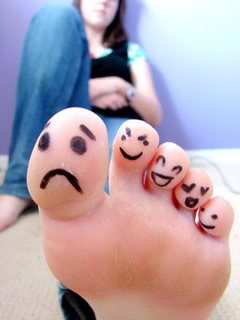Discovering That Your Child is Being Bullied
There are many situations that parents dread, and one of their biggest nightmares may be discovering that their child is, or has been, the victim of bullying. Bullies are not just other children who are openly obnoxious. Sometimes a bully can come into your child’s life masquerading as a friend, or sometimes it can even be a teacher.

There is a difference between everyday childish disputes, playful “ribbing” between friends and genuine bullying. A child may come home and grumble about having been thumped or called names by another child who, most of the time, would be considered as a close friend. This type of situation is often short-lived, does not have any traumatic or psychological impact on the child and, often as most parents know, will blow over as quickly as it began. Children will often embellish and fabricate stories for effect, but being able to differentiate between a harmless tiff and true bullying is important.
Signs That Your Child May Be a Victim of Bullying
When a child is being exposed to persistent unwelcome behavior, either mentally or physically, and is genuinely disturbed by what is happening, then it is crucial to listen to them, believe them, and take positive action. However, not all children will admit to being bullied. Usually there will be signs, some subtle and some obvious, that your child is the victim of bullying. These include feigning illness to avoid having to go to school, a decline in subject grades, reluctance to participate in extra-curricular activities, inexplicably losing money or personal property, or (in older children) taking longer than usual to walk to and from school because they have taken a different route in order to avoid the bully or bullies. Physical signs of bullying might include torn clothes, or unexplained scratches, cuts, or bruises. Your child may begin suffering nightmares, bedwetting or mood swings.
What is Bullying?
Bullying includes harassment, intimidation to varying degrees, taunting and ridicule. Sometimes, bullies are motivated by hate and bias, sometimes by cultural norms, peer pressure, or the desire to retaliate. Bullying may occur within the context of initiation rituals and be labeled “hazing,” or it can be overtly or implicitly about gender, constituting sexual harassment. Sometimes, there is no readily identifiable reason for bullying; when kids are asked who school bullies target, their answers can be disturbing because they are not extraordinary: bullies pick on kids who are “weaker,” “smaller,” “funny looking,” or “dumb.”
Although no standard or universally understood definition of bullying exists, certain elements usually are present. The first is a pattern of behavior over time–repeated exposure to intentional injury or discomfort inflicted by one or more students against another. This behavior may include physical contact, verbal assault, social ostracism, obscene gestures or other aggressive acts that cause the victim to feel fearful or distraught. More serious instances of bullying can result in physical injury or emotional trauma. A second common element is a perceived imbalance of power, which allows one student–or group of students–to victimize others.
Bullying takes on many forms, but all have the same result; they cause misery and stress-related illnesses to their victims.
The following are examples of types of bullying:
- Physical bullying
- Direct Verbal Bullying (Taunts, name-calling and verbal threats to the victim’s face)
- Indirect Verbal Bullying (Cruel comments behind the victim’s back intended for the victim to overhear, unkind notes, letters, graffiti)
- Exclusion & Isolation Bullying (Deliberate exclusion from playground activities and friendship groups, or total ignorance of the victim. Often stands or sits alone at playtimes and is avoided in the classroom)
- Racial Bullying (This can encompass all the other types of bullying and the victim is targeted because of his or her race. Verbal attacks usually make reference and fun of the child’s ethnic origin)
- Cyber Bullying (Text messaging, mobile phone calls and messages, e-mail)
More and more children are being exposed to “cyber bullying”, which involves sending malicious text or cell phone messages, posting rude and hurtful comments or outright threats via the Internet. This issue has also been highlighted in the national news recently, which demonstrates that bullying can follow more sinister paths and does not necessarily mean face-to-face confrontation. Cyber bullying can be more frightening in that it can often protect the anonymity of the bully and, hence, the victim becomes distrustful of everybody.
What Should You Do as The Parent of a Bullied Child?
- Reassuring your child that it is not his fault is one of the most important steps a parent can take. Teach your child to be proud of himself and any differences about which he may feel conscious. It’s OK to be different. Many of the world’s successful people did not get where they are by being the same as everyone else.
- It is natural for you to feel angry and your initial reaction might be to confront the bully yourself, or to approach the parents of the bully. This could create more problems for your child and yourself. If the bully is aggravated, it may fuel his or her intent to further harm your child. If the bully comes from a violent home, you too could find yourself on the receiving end of some unwanted harassment yourself. Let the school take the responsibility of contacting the parent(s) of the bully.
- Assess the seriousness of the situation. Sometimes a harmless tiff can be blown out of proportion and when the sparring children are friends again, the parents are still at war with each other.
- Inform your child’s school, but first ask your child whether she would prefer to speak to her principal herself. If necessary, ask the school to protect her anonymity. Sometimes the best way to expose a bully is for the teachers to catch him or her red-handed.
- Find out what the school’s current bullying policy is and how the school intends to monitor the situation.
- Teach your child strategies for dealing with the bullying. Tell your child to stay in a group when at all possible and to let you know exactly where he is going and with whom at all times. Enroll him in a self-defense class, not as a method of harming the bully, but as a means of defending himself. If the bullying is verbal, tell your child to confront the bully by saying, “Please don’t call me that again. It’s cruel and hurtful.”
- Encourage your child to feel comfortable talking to you, a teacher or a counselor and to confidently report every incident of bullying.
- Ask your child to keep a dated diary of events that you can share, or make your own record of incidents, including any mood swings or emotional and physical effects that you notice in your child that you may think is attributed to the bullying.
- If the school appears to be ignoring the situation, or taking no constructive action, write a formal letter to the principal expressing your grievances and copy the letter to the local school board. If you still do not feel that the school is being supportive, threaten to remove your child from the system until positive action is taken, or even consider seeking legal advice.
